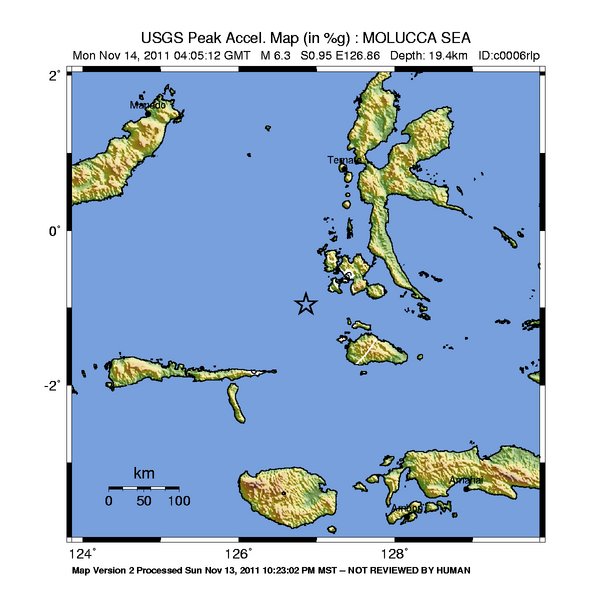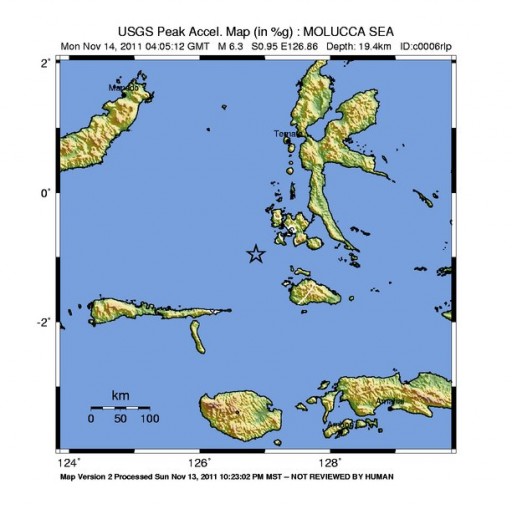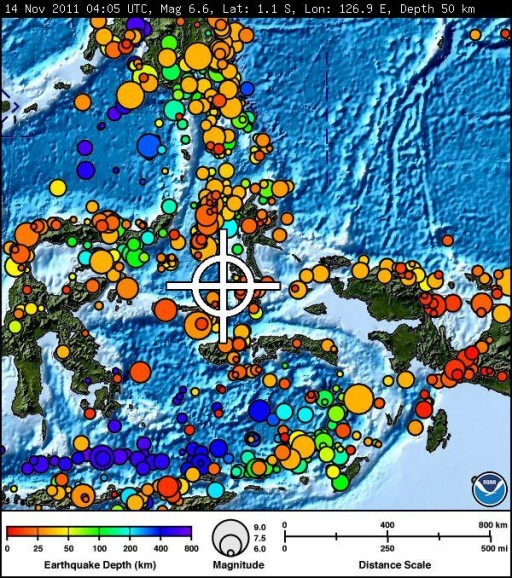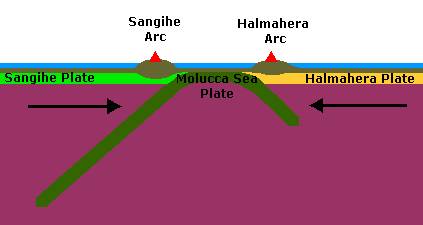Magnitude 6.3 – Molucca Sea

Magnitude 6.3 earthquake hit area of Molucca Sea on November 14, 2011, according to USGS. Epicenter was located 200 km (124 miles) SSW of Ternate, Moluccas and 337 km (209 miles) NNW of Ambon, Moluccas, Indonesia (0.954°S, 126.864°E).
Depth was at 19.4 km (12.1 miles). EMSC registered magnitude 6.6 at depth of 20 km. Pacific Tsunami Warning Center reported magnitude 6.6 with depth of 50 km and inform that there is no tsunami alert.
Pacific Tsunami Warning Center reported magnitude 6.6 with depth of 50 km and inform that there is no tsunami alert.

The Molucca Sea Plate is a micro plate squeezed in between the micro plates: Sangihe Plate and Malmahera Plate, all three in Indonesia. The Molucca Sea is the only present day example of ocean basin closure as a result of subduction of oceanic lithosphere in two opposite directions. The outcome of the double subduction has been the creation of the Sangihe arc in the west and Halmahara arc in the east.
The Molucca Sea Plate was originally part of the Philippine plate when the Australian Plate was much further south 13 million years ago. The Sangihe trench was active at that time, subducting oceanic lithosphere of the Molucca Sea to the west. The Sangihe subduction is believed to date back to the Oligocene and is much older than the Halmahera in the west. The depth of the downgoing slab at the Sangihe subduction zone is therefor much deeper than at at the Halmahera subduction zone (see diagram). The Sangihe Arc will continue to override the Halmahera arc and in 5 Ma the Molucca Sea will eventually disappear. In the north it has in fact already disappeared under the Eurasian Plate and The Philippine Sea Plate, as most of the Molucca Sea Plate has already been "consumed" (subducted) by the Halmahera subduction zone in the east and by the Sangihe subduction zone in the west.

Volcanic activity along the Halmahera arc has ceased north of Morotai Island, but volcanism continues further north along the opposite Sangihe arc.
The Sorong Fault Zone is a major left-lateral fault system separating Australia from the Philippine Sea Plate (Halmahera micro plate) and the Molucca Sea Plate.

Commenting rules and guidelines
We value the thoughts and opinions of our readers and welcome healthy discussions on our website. In order to maintain a respectful and positive community, we ask that all commenters follow these rules.